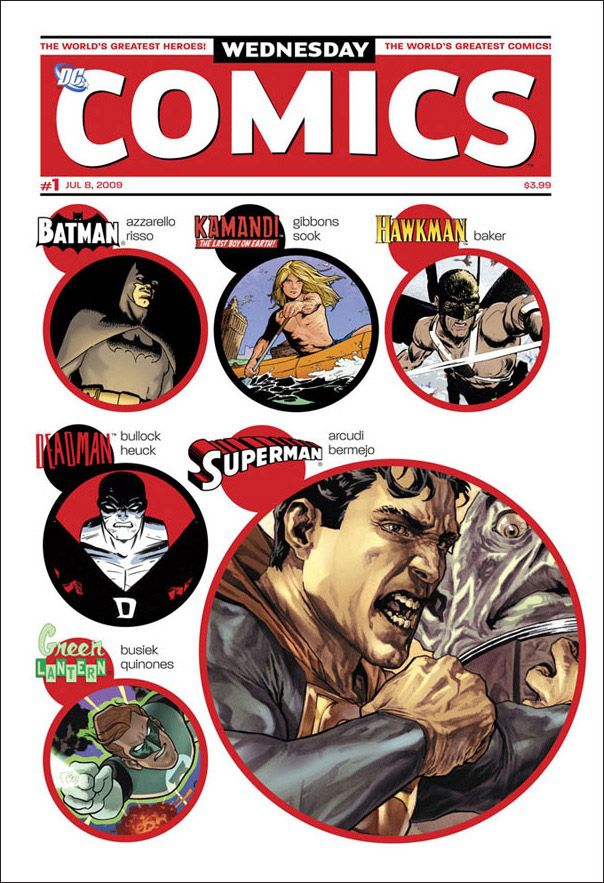Say what you will about DC, but it is always willing to try new things and push the boundaries, particularly with their weekly series. "52" managed to tell a year-long story in real time written by four of the top writers in the business and never missed a week, while "Trinity" had the same creative team do the lead story of every issue for an entire year and, now, "Wednesday Comics" is continuing that tradition of doing things differently with the broadsheet format reminiscent of Sunday comics pages.
Under DC art director Mark Chiarello, "Wednesday Comics" stands out with its unique format that involves having to unfold the issue to reveal pages four times the normal size, printed on high-grade newsprint, and containing 15 different stories in each issue. It's a format that emphasizes the art, something that seemingly goes against the grain in today's writer-dominated industry where big event stories are what lead to top sales.
But, the format works extremely well, each page gorgeous and unique with a healthy mix of artists known for their superhero work and artists that fall outside the regular DC stable. More than that, each of the 15 pages has its own look and style that isn't replicated elsewhere, something that's harder to pull off than you'd think. Chiarello has assembled a diverse and interesting collection of creators.
There are some obvious stand-outs like Paul Pope's "Strange Adventures," Neil Gaiman and Mike Allred's "Metamorpho," and Brian Azzarello and Eduardo Risso's "Batman," all of which helped the pre-release hype of the book and deliver strong pages, managing to meet expectations. But, the real joy of this debut issue are those pages that didn't leap out immediately like Karl Kerschl and Brendan Fletcher's "Flash" page, which is divided into two stories, the first starring Barry Allen as he goes up against Gorilla Grodd and the other starring Iris Allen as she considers leaving Barry. It's a concept that makes that page stand out, and is a strong callback to comics pages.
All of the artists take advantage of the larger page sizes to deliver thoughtful and meticulous page layouts, well aware that even pages with 12 or more panels will still have plenty of room for detail. In that way, "Wednesday Comics" works best by simply stepping back and admiring each page as a whole, drifting some of Risso's dark, noir art to Sook's lush post-apocalyptic waterscapes to Pope's pulpy sci-fi to Conner's cute visual comedy and so on. Each page is a joy to look at and study.
The one flaw with this issue is the writing, none of which comes close to the art, mostly hampered by the single page that, in every case, acts as the first part of the story. Not many of the pages work as a whole on a pure story level, which is a shame since you would hope the writers would rise to the challenge of the format the same way that the artists have. As well, having every feature in this issue be part of a serial is maybe not the wisest choice since one or two self-contained features would have acted as nice breaks in the constant start-and-stop flow of these narratives.
However, since "Wednesday Comics" is clearly meant to showcase the art, the weaker writing is easy to overlook and should be forgotten when these stories can be read as a whole. Until then, this is an interesting and beautiful book that makes you want to buy two copies so you can rip it apart and put pages up on your walls. Definitely a reason to hit the shop every Wednesday if you weren't already.

